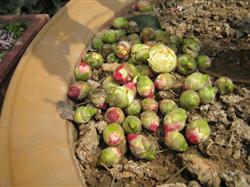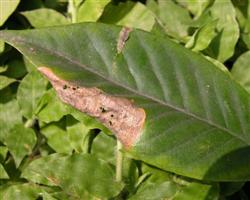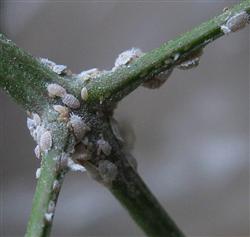How to prevent Camellia from falling buds and scorched flowers

How can camellia prevent falling buds and scorched flowers? Please introduce the prevention and control methods of camellia with falling buds and scorched flowers, which will reduce the number of flowers, premature senescence of flowers, shorten flowering period and reduce ornamental value. The main reasons are as follows. One: the impact of drought and waterlogging. Camellia is a fleshy root, aerobic and like to be moist. Such as drought and lack of water, it is easy to wither roots, such as too much watering, roots will rot due to lack of oxygen, plant water metabolism will be destroyed, resulting in fallen leaves, buds and scorched flowers. Second: malnutrition, nutrient deficiency or imbalance. Camellia likes to be fat, has a long blooming period of pregnant buds and needs a lot of nutrients. Lack of fertilization after budding, poor development of buds, lack of stamina after flowering, easy to drop buds or scorched flowers. Excessive nitrogen fertilizer, plant growth, lack of nitrogen fertilizer, thin branches and leaves, thin yellowish leaves, poor bud development, falling buds, easy to scorch flowers. Scorched flowers can also be produced by applying concentrated fertilizer and unrotten organic fertilizer at flowering stage. Third: climate impact. Camellia often blooms in winter and spring, the blooming weather is changeable, cold wave is frequent, cold and warm mutation, lack of light, plant physiological function decreases, causing falling flowers and scorched flowers. Strong light, petals withered and scorched, too much rain, too much humidity, petals rot, shorten the flowering period. Fourth, the basin soil structure is poor. Camellia likes acid and bogey alkali, the suitable pH value is 5 to 6.5, the water quality of watering flowers is poor, alkaline fertilizer or chemical fertilizer is applied only, and the basin soil is salinized, which leads to poor root growth, bud shedding and petal scorching. The measures to prevent camellia from falling buds and scorched flowers are as follows. Scientific fertilization: Camellia requires frequent application of light fertilizer, reasonable collocation of a variety of fertilizers, no application of immature organic fertilizer and no application of high concentration fertilizer. After budding, the times of fertilization should be increased appropriately, mainly with phosphorus and potassium fertilizer, supplemented by nitrogen fertilizer, to enhance photosynthesis and promote the development and enrichment of flower buds. 0.1% ferrous sulfate is poured or sprayed once a year to adjust the pH of the soil. Reasonable water supply: Camellia likes shady and humid environment and avoids drought and waterlogging. Watering should be done at low temperature, little or no watering in overcast and rain, no dehydration in high temperature and drought, and keep the basin soil moist at ordinary times. When it is overcast and rainy for a long time or too much watering, and when the humidity of the basin soil is high, dry plant ash can be applied on the basin surface to reduce moisture, increase nutrients such as calcium, potassium and magnesium, realize the coordination of water and fertilizer, make branches and leaves grow healthily, and flower buds develop fully. Improve lighting: Camellia likes scattered light, avoid scorching sun exposure, usually maintenance should reduce direct light, maintain good ventilation. Especially when the bud is budding, prevent the bright light from shining directly. Keep the light after entering the house in winter, prevent excessive humidity and temperature, maintain the normal physiological function of the plant, provide for the development of flower buds, and prevent falling buds and scorched flowers. Hormone regulation: during the expansion period of camellia buds, the buds were sprayed with 40ppm to 50ppm gibberellin or 2.4 murine D from 15ppm to 20ppm once every two days for a total of 5 to 8 times. This can improve the activity of enzymes, inhibit the formation of detachment, prevent falling buds and scorched flowers, promote large and colorful flowers, and prolong the flowering period. Replace the new pot: potted camellia after years of growth, pot soil aging, nutrient depletion, will lead to root senescence, plant malnutrition, thin buds, resulting in falling buds and scorched flowers. Therefore, Camellia should be changed regularly. Generally, the small basin is changed once in 1 to 2 years, and the large basin is changed once in 3 to 4 years. Combined with changing pots and soil, pruning withered roots, rotten roots and senescent roots, and changing them into moist, loose and fertile culture soil to promote the growth of new roots and maintain exuberant absorption function. Click to get more camellia planting techniques click to get more flowers and trees planting techniques
- Prev

How to control diseases and insect pests of gardenia?
How to control diseases and insect pests of gardenia? Please introduce the method of gardenia flower leaf spot disease and chlorosis, leaf spot disease with 65% zinc wettable powder 600 times spray, regular watering with 0.1% ferrous sulfate solution to prevent chlorosis. Pests are harmed by diamondback moths, shell insects and whiteflies, killing EC 300 with 2.5% enemies.
- Next

How does camellia prevent pests?
How does camellia prevent pests? Please introduce the control methods common on the Camellia scale insects are mainly red wax medium, blowing cotton medium, chaff shield medium, tea brown round medium four kinds. Red wax: female adult shell waxy thick, rose red first, then purple, 3 mm to 4 mm in diameter, top umbilicus, Zhou...
Related
- Fuxing push coffee new agricultural production and marketing class: lack of small-scale processing plants
- Jujube rice field leisure farm deep ploughing Yilan for five years to create a space for organic food and play
- Nongyu Farm-A trial of organic papaya for brave women with advanced technology
- Four points for attention in the prevention and control of diseases and insect pests of edible fungi
- How to add nutrient solution to Edible Fungi
- Is there any good way to control edible fungus mites?
- Open Inoculation Technology of Edible Fungi
- Is there any clever way to use fertilizer for edible fungus in winter?
- What agents are used to kill the pathogens of edible fungi in the mushroom shed?
- Rapid drying of Edible Fungi

